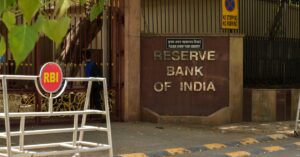Moving with Plants
Since the pandemic’s beginning, we have seen an upend trend about people moving to suburbs, rural areas, and even small vacation towns (1). And it is tough for people to pack and move their houseplants since they need extra care to keep them protected during the relocation. Plant parents often end up leaving their plants, giving them to their friends or family, or a nursey if they can’t take them with themselves. Many moving companies also often refuse to transport platforms because of the possible liabilities (2).
However, the trends for moving with plants have been increasing for a while now (3); many startups have emerged that help plant parents transport and set up their house plants and gardens.
ShiftingSolutions is one such platform that helps people connect with the right packers and movers for their plants. Other startups in this space include Assureshift and ILoveMoving (DM us if we missed putting your names here!).
And there is plenty of room for businesses to move in the industry, especially with the houseplant industry on the rise (4). Other opportunities in the space include helping people maintain and take care of their plants, offering subscription boxes containing different plants and related products, and being an influencer.
For instance, Darryl Cheng, a “plantstagrammer,” has over 620k followers on Instagram (5).

You can also create an app for plant parents like Greg that uses technologies like machine learning to remind people when to plant their plants and other maintenance of a house garden. It recently received over 5.4 million USD in seed funding (6).
Maintain Mental Health
According to Google, people worldwide search for “how to maintain mental health” more than ever this year (7), with the pandemic bringing the mental health talks in the mainstream (8).

We have covered mental fitness among several trends in our post about the biohacking industry. We continue to see more buzz in this industry as we move to 2022.
Body Positivity
Body positivity searches went a record high in 2021 worldwide (9), and there are many ways businesses can include the change in social beliefs into their marketing and offerings.
The body positivity movement has been gaining moment over the past several years. With that, more companies have started adapting their product collection and advertising to empower women of all sizes, shapes, and skin tones.
For instance, historically, any garment labeled “nude” represented a single light beige share. However, thankfully, with the body-positive garment brands, there are now expanding the range with various nude shades to match a broad spectrum of skin types (10).

When it comes to body positivity, two brands are trailblazers in the industry, Dove and Aerie.
Dove launched its Real Beauty Campaign in 2004, which serves as a reference point for other brands even today. In this campaign, Dove showcased models of all different races and sizes. And the success of Dove from the campaign was enormous, with over 2.5 billion USD in its opening campaign year (11).
Aerie is another brand that set fire to the retail industry by not retouching photos of their models on their social media platforms and website since 2014. And since then, it has supported the positive body movement and went even further by featuring women in wheelchairs, with prosthetics, and with colostomy bags in their marketing efforts.
Aerie partnered with the National Eating Disorder Association and donated over 1.5 million USD earlier this year to further prove their commitment and passion (12). Their pivot was well received, and the brand has seen a double-digit sales growth for 26 quarters straight.
With more and more people awakening to body positivity, it has become important for businesses to become inclusive. It is important to remember that today customers want to feel as though brands need them, not the other way around. Hence, you will be able to attract a wider audience by adapting genuine inclusion strategies.
Retrograde
“What is retrograde” is another most searched term worldwide on Google (13), indicating influential shifts shaping modern customers. We believe that the shift enables marketers to understand cultural trends, allowing them to experiment with their brand campaigns and target their target audiences.
We look at retrograde as a shift towards nostalgia, authenticity, and the role of digital to bring back old school culture, music, and art to new generations.
For instance, today, content of all kinds from past decades is available on platforms like Netflix, YouTube, and Spotify. In the 80s, we had to invest in cassettes and CDs to listen to their favorite artists. However, people today have instant access to movies, music, and a lot more from every decade.
Brands can lean into this Retrograde shift by finding the greatest influence on their target audience based on their product categories.
For instance, Netflix keeps hunting decade-old movies and shows to resurrect potential genres. Sitcoms such as The Big Bang Theory and Friends continue to draw viewers. And who else is excited for Return to Hogwarts? We are!
The point is that the potential appeal of old decades is not limited only to shows and movies and can extend to various categories.
I guess I’ve got #Y on my mind.
After all, the legend is back! https://t.co/8H95PohYN6#YezdiForever pic.twitter.com/r6VNo8lTkt— anand mahindra (@anandmahindra) November 10, 2021
For instance, Mahindra & Mahindra, an automaker, recently tapped into it with its launch of Yezdi motorcycles (14). The brand banked on the memories of the 80s with the Yezdis of India project to revive the memories of a legendary motorcycle. And the launch announcement is garnering excitement from Gen Y.
“When you can resurrect a legendary brand and create new stories around it, business evolves much more than profit; it is fun,” stated Anand Mahindra, Executive Chairman of M&M, in a tweet.
All in all, consumers are leaning more towards their cultural heritage to define their authentic selves. Today, more people are rediscovering their cultural heritage and roots via music, travel, art, and movies. They practice their traditions and culture and find ways to identify themselves based on their learning.
And we believe that brands that will work in this ques and become a part of a content that defines their origin can positively impact their legacy and other metrics.
Road Trips
Amid the coronavirus pandemic, there has been a surge in road trips with people visiting nearby locales, taking a quick getaway to a nearby hill station or beach that is only a few hours, or spending a weekend close to nature.
Several startups are helping people to plan their road trips to ensure a smooth journey without worrying about troubles like getting a flat tire, finding a rental car, and going out of their budget.
ScoutMyTrip, for instance, allows people to plan their trips and offer them details about various things available in their selected routes, so people don’t have to stop every ten minutes to look for a good hotel or restaurant. Startups like StrandD offers roadside assistance and even take users to their next destination.
And if you are a woman traveling solo or on an all-girls trip, there are startups like 24response that offer on-demand safety.
If you want to take your offerings a step forward, you can offer curated routes, connect travelers to their destinations, and even offer video routes and “electric” routes for EVs.

For instance, Road.Travel is an industry-first digital platform that offers in-car storytelling powered by voice AI and a worldwide network of creators. There is also room for working with tourism officials and co-creating content and other digital projects.
Camping
Camping and glamping (a tad luxurious version of camping) have emerged strongly in India and worldwide amid the pandemic.
According to Grand View Research, the global glamping market size was 1.88 billion USD and is likely to expand at a 14.1% CAGR from 2021 to 2028 (15).
Unlike the west, camping has been dormant in India until recent years. However, there is a change in the market with Gen Y, who love traveling; we can see the future looking bright for businesses in this space with young generations looking for more camping and hiking sites.
India has one niche startup in this niche, HireACamp, based in Dehradun, that offers a single platform for campers to find and book a wide range of campsites, including luxury, jungle, hill, and beach. Another startup we found was LuxeCamper that allows people to rent a caravan and go on a road trip at multiple campsites in India.
In short, there is plenty of room for entrepreneurs to enter this gradually growing niche to offer varied services related to camping and hiking.
You can offer a platform to search and book camping accommodations, curate personally owned campsites (Mounty, for instance), and offer camping gear rentals at an affordable rate for people who are not avid campers. There is also an option to build a community among enthusiasts to help them participate in various camping events, share information, experiences, and discover new camping sites.










